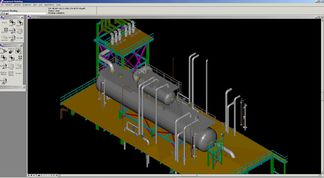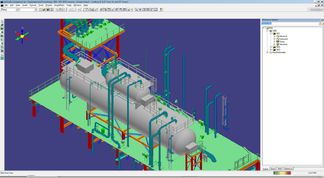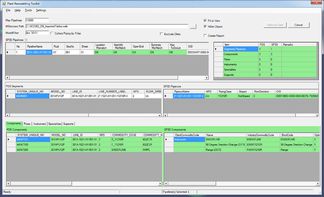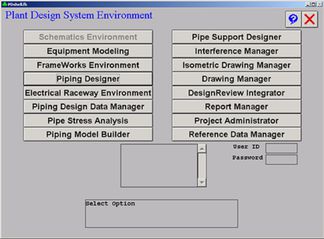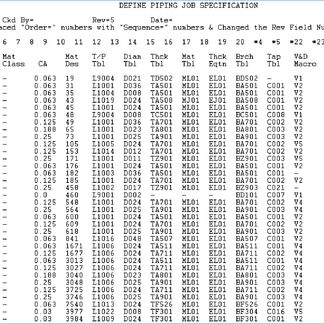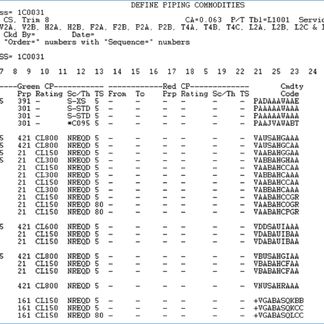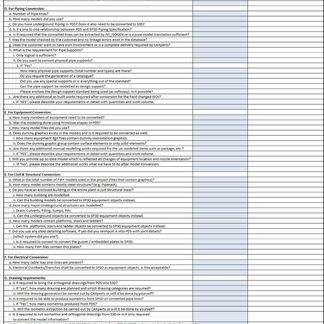Plant Model Migration to Smart 3D
Data Migration and Transformation
Summary
This TecSurge Service delivers fully intelligent Intergraph Smart 3D (including SmartPlant 3D) plant models by migrating source data from other plant modelling systems such as Intergraph PDS, CADWorx, AVEVA PDMS/E3D, Autodesk Plant3D and Bentley OpenPlant.
TecSurge uses a combination of state-of-the-art proprietary automation, specialised expertise, and a well-organised, scalable technical team to set industry benchmarks for quality and schedule, while remaining highly cost competitive with alternatives.
Our service provides comprehensive coverage of all aspects and disciplines of the plant design application, including specifications and catalogues, multi-discipline models and orthographic and isometric drawings.
Differentiators
- Proprietary automation technology produces reliable and predictable results
- Comprehensive offering addressing both automated and manual components
- Flexible and scalable to meet varying client scenarios and schedules
- Automated verification and quality control
Deliverables
The primary deliverable from this service is a Smart 3D backup containing the migrated catalogue, model, drawings and reports. The migration can target SmartPlant 3D 2011 R2 or later, and data can be provided in either Microsoft SQL Server or Oracle database format. Where required, data can be merged into another existing database using Model Data Reuse (MDR) functionality.
In addition to this primary deliverable, secondary deliverables such as quality and project management reports are prepared and provided to the client as part of the service.
Due to the complexity and high level of detail involved, the target level of fidelity of the migrated model is subject to many factors which are be determined based on discussion with the client. Typically, a trade-off is made between time/cost and fidelity, however the scenario driving the migration requirement is possibly the most important factor.
For some scenarios, the source model has been developed to only a preliminary stage (e.g. basic engineering), and will be substantially reworked in Smart 3D after migration. In such a case, a minimal amount of manual retouching may be justified, and certain elements may not even exist in the source model (e.g. pipe supports or drawings).
In other scenarios, the source model represents an as-built status, complete with all physical elements and deliverables such as drawings, and must be migrated to a target model with as close to full fidelity as is technically possible.
Work Process
Specifications and catalogues
The migration work process begins with the conversion of the source specifications and catalogues to the target environment. In some cases, compatible target catalogues are already available, but TecSurge highly recommends a thorough comparison be performed in order to eliminate problems due to mismatches or dimensional inconsistencies.
Piping specifications are converted following the process described in the Piping Specification Conversion service, while those for other disciplines follow a very similar but usually simpler conversion and checking process.
Specification and catalogue conversion is typically scheduled such that data is made available progressively, according to its relative priority with respect to the model migration component. For example, commonly used 150-pound, carbon-steel piping specifications may be converted and delivered much earlier in the project schedule than limited-use exotic material specifications or vendor piping systems.
Model
In parallel with the specification and catalogue conversion, the source model is processed into a neutral form used as the input to the migration automation software. The specifics of this processing vary depending upon the source system; the Material Data Publisher (MDP) software is used with PDS, while TecSurge proprietary PML macros are used with a PDMS source model.
When specification and catalogue data is released for use and the source model has been processed, the model migration process commences according to the project schedule. Typically, equipment and structural migration can be completed earlier, with piping dominating the overall migration effort due to its complexity and linkages to the other disciplines.
Within each discipline, a series of phases of activities are performed:
- Automation is applied to migrate the source data to the target (this automation may in itself involve several steps, such as firstly migrating graphical elements, and then separately migrating additional attribute and property data)
- Manual retouching is performed to improve the fidelity of the migrated model (for example, the source system may not contain structural member connection relationship information, so this must be applied to the target manually)
- Automated comparison and quality checking is utilised to review and correct any mismatches
Drawings
Once model migration has been completed, drawing generation for piping isometrics and drawing migration for orthographics can begin, if required by the client.
The piping isometric generation module is typically configured to match the format and presentation of the source environment as closely as possible, and then isometrics generated in bulk and spot-checked against the source drawings to monitor quality. Depending upon client requirements, various additional elements of data may be incorporated into the model to support isometric drawing fidelity, including:
- Explicit drawing sheet split points
- Revision and title block information
- Process and line condition data
- Hold markers and other notes
Orthographic drawings sheets, styles, filters and rules are configured to match the drawing types from the source system, and then drawing volumes and drawing details automatically migrated using TecSurge’s proprietary automation tools.
Once the automated component of the drawing migration is completed, manual retouching is performed to apply drawing-specific filters, add and reposition dimensioning and labelling, and add additional 2D graphics and text to match the source drawings. Checking is performed by manual comparison of the resulting drawings against the originals.
Technical Scope
- Specification and catalogue migration
- Piping
- Structural
- Electrical
- Multi-discipline physical model migration
- Equipment
- Piping (including pipe supports)
- Structural and civil
- Electrical (including equipment and cable trays)
- Instrumentation (including in-line and offline)
- Access, maintenance and other envelopes
- Drawing migration
- Piping isometric regeneration
- Orthographic volumes and drawing migration
- As-built drawing embedding
- Manual retouching
- Application of client modelling standards and procedures
- Conduit and duct banks
- Roads and paving
- Adjustments to label and dimension positions
- Additional annotation and dimensioning where required
- Quality assurance
- Automated comparison of source and target
- Manual review and checking of deliverables
- To-do list management
Quality Assurance
Due to the necessity to use manual retouching within some parts of the model migration process, and also to address fundamental differences between the source and target systems, TecSurge has developed a suite of quality assurance tools to ensure a high quality result. These tools perform a variety of comparisons between the source and target systems, verifying elements such as:
- Component end point locations and coordinates
- Property data
- Isometric bill of materials
Our quality tools allow designers to quickly identify potential migration errors, and zoom into affected elements in order to make any necessary adjustments. In some cases, well-known migration errors can be automatically corrected by specialised tool functions.
Getting Started
In order to make a full and accurate estimate of the effort, TecSurge relies upon information provided in three different forms:
- Consultative discussion, regarding overall fidelity and scope requirements
- Detailed quantitative and scoping factors, captured in a questionnaire
- Access to the source specifications, model and drawing data
In cases where access to the source data is not available, less accurate estimates can still be prepared based on the information supplied in the first two forms. Where detailed source data can be provided, TecSurge will request a full backup of the source model and reference data in the application native format.
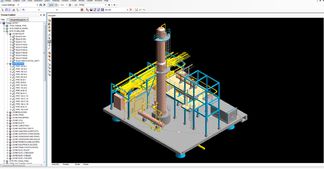
The following high level questions have a significant impact on the time and cost of the migration project:
- Is specification and catalogue conversion required?
Why: specification and catalogue migration can be a significant effort in its own right, and can impact the critical path of the project. - Should manual retouching be performed by TecSurge?
Why: manual retouching of the migrated module is by definition a manual effort, and therefore has a considerable impact on the number of resources and therefore cost. - Are orthographic drawings to be included in the migration?
Why: orthographic or arrangement drawings often require significant manual retouching to match the originals, and this impacts the number of resources required. - Are there specific schedule constraints (e.g. hard delivery deadline)?
Why: aggressive schedules can be met by TecSurge, however they may require additional resources and increase cost.
